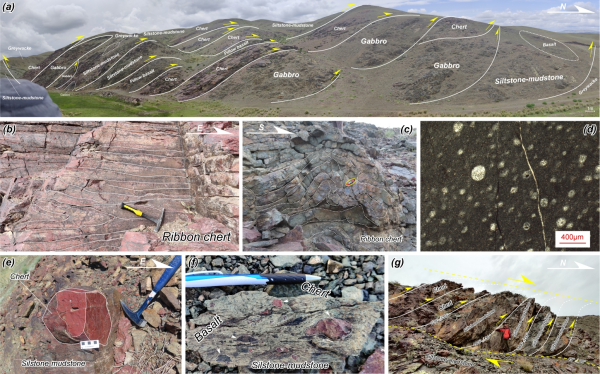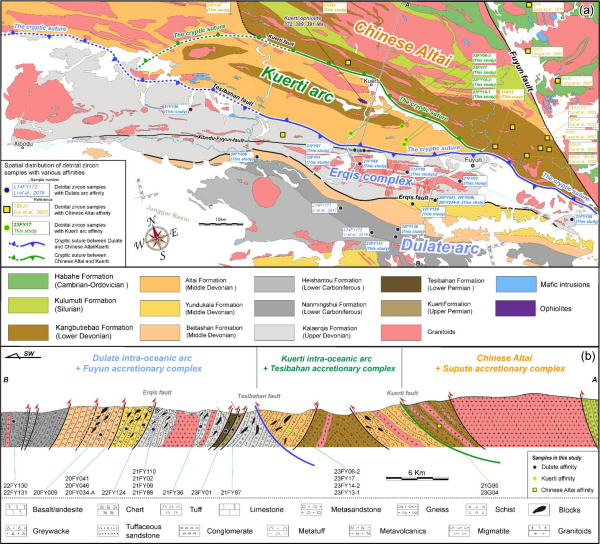Researchers Unveil Amalgamation of Altai-Kuerti-Dulate Arc in Southern Altaids, China
2024-11-08
The Chinese Altai-East Junggar orogenic collage, located in Xinjiang, Northwest China, serves as a crucial link between the Mongolian collage system to the east and the Kazakhstan collage system to the west. This positioning preserves the fundamental geological architecture of the southern Altaids.
The Erqis tectonic belt, one of the most significant tectonic belts of the Altaids, lies at the junction of the Chinese Altai and East Junggar. It formed due to the subduction and eventual closure of the Ob-Zaisan Ocean, a branch of the Paleo-Asian Ocean. Despite its importance, there remains considerable debate over the direction of subduction and the precise timing of the ocean's closure.
In a study published in Tectonics, a research team led by Prof. XIAO Wenjiao from the Xinjiang Institute of Ecology and Geography (XIEG) of the Chinese Academy of Sciences conducted systematic field investigations, large-scale litho-structural mapping, and comprehensive structural, geochemical, and provenance analyses across the Erqis fault zone.
Researchers revealed three distinct arcs along the Erqis tectonic belt. To the north, the Chinese Altai arc shows a prolonged history from the Late Cambrian to the Early Permian, characterized by a narrow accretionary complex known as the Supute accretionary complex (AC). In the middle lies the Kuerti intra-oceanic arc, which emerged during the Silurian to Devonian periods, associated with the smaller Tesibahan AC. Further south, the Dulate arc predominantly evolved from the Middle Devonian to the Permian, giving rise to the Fuyun AC developed independently along its northern margin.
These findings indicated the existence of multiple arcs within the Ob‐Zaisan Ocean, forming an archipelago paleogeography in the Paleo‐Asian Ocean and the cryptic sutures demarcating the Chinese Altai, Kuerti, and Dulate lie approximately along the Kuerti and Tesibahan faults, respectively. Moreover, the findings showed that the Ob-Zaisan Ocean subducted northward beneath the Chinese Altai and Kuerti arcs and southward beneath the Dulate arc, and closed most probably ∼273 million years ago.
"The anatomy of the Erqis tectonic belt reminds us that the real sutures in ancient orogenic belts are often much more cryptic and complicated than we thought," said GAN Jingmin, first author of this study. This study advances the understanding of the Paleozoic tectonic evolution and the accretionary evolution of the southern Altaids.
Article link: https://agupubs.onlinelibrary.wiley.com/doi/full/10.1029/2024TC008272

Figure 1 Representative field photos of the Erqis tectonic belt (Image by XIEG)

Figure 2 Three distinct arcs along the Erqis tectonic belt (Image by XIEG)
Contact
LONG Huaping
Xinjiang Institute of Ecology and Geography
E-mail: longhp@ms.xjb.ac.cn
Web: http://english.egi.cas.cn



